Crocodiles are skillful predators that thrive in water but also spend considerable time on land.
They are strong, thick-skinned, and have bony armor backs that have birthed mythical beliefs of being impervious to bullets.
However, is there any truth to this popular myth? Are crocodiles bulletproof?
Crocodiles skin is ultra-tough with bone-like scales. They are mostly made up of hard thick muscle, which gives them rigidity and a unique hardness blend with flexibility.
However, these properties do not make it bulletproof. The bony armor may sometimes help prevent bullets from reaching internal organs, but the truth is a well-placed bullet from a high-caliber gun will easily pierce through its hard skin.
This article delves into the inner layers of crocodile skin while elaborating answers to its thickness and resistance, especially to bullets.
Are Crocodiles Bulletproof?
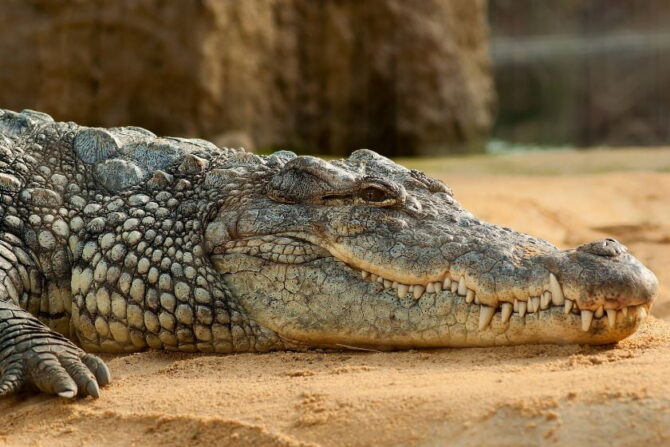
The answer is no! Crocodile skin cannot resist bullets.
The misconception leading to the above question stems from crocodiles being one of the few and oldest species with unique and tough skin.
As noted earlier, their skin is largely made up of pure muscle that helps keep them safe in their harsh water environment and from predatory attacks.
Yet, a bullet is an entirely different element. Of course, there are factors to consider, which include the caliber of the gun used, the distance of the shot, and the body parts hit.
Some low-caliber guns will not have much impact from a long distance; bullets are a threatening force to crocodile skin, notwithstanding the caliber.
In most typical crocodile hunting practices, hunters primarily use guns with lesser weapons, such as knives, arrows, and matches.1
The crocodiles are lured with baits of meats onto the surface of rivers and precisely shots in the head.
At best, they may be able to survive a few shots, but the fact remains that crocodile skin is not bulletproof.
Also See: Are Alligators Bulletproof? How Thick Is Alligator Skin?
How Thick is Crocodile Skin?
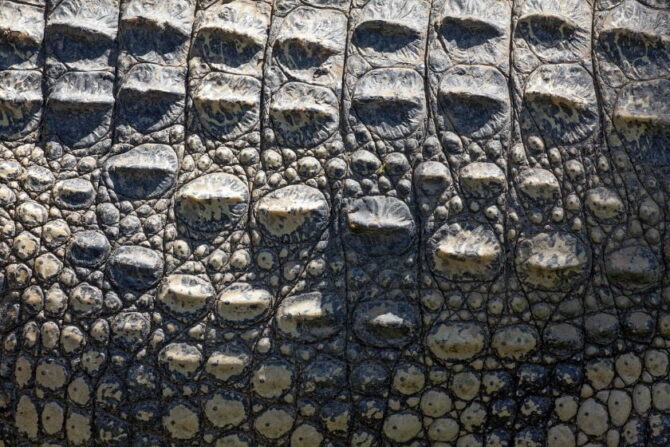
A crocodile’s skin has varying degrees of thickness, but for the most part, its bony scales are made up of very thick keratinized skin, and its back layers of ossified scales.
The average thickness of adult crocodile skin typically ranges from 0.5 inches to 1 inch thick. The skin on the back of the crocodile is thicker and more heavily armored than the skin on the belly.2
Crocodile skins are undoubtedly thick; their hide is even considered one of the strongest materials on the planet.
However, they are only thick enough and most sought after for bags, leather, and fashion production, not for military application.
Its skin was not designed to resist bullets but rather a harm from its habitats.
What is the Skin of a Crocodile Made of?
A recurring truth established in this article is the tough composition of crocodile skin.
What exactly are these tough composition that makes up crocodile skin?
Crocodile skin is mostly made up of scales and bony plates in certain areas, such as the upper and lower part of its tail.
These scales are arranged in rows of ridges and exclude bony plates.
They serve as protective armor to a crocodile’s internal organs and are made up of keratin, the same skin component that makes up the nails of the human body and animal hooves and horns.
These scales, which make up most of a crocodile’s skin, provide resistance against external harm to the crocodile.
However, scales are not the only protective armor of crocodile skin.
Between the scales and along the bony plates, a crocodile boasts yet another protective armor called osteoderms.
These plates of osteoderms are flexible dermal bone structures typically found in reptiles and a few mammals.
However, for crocodiles, these plates provide additional protection to the upper layer of the skin and create unique patterns on their backs.
More importantly, they take in heat from the sun to provide similar energy humans derive from food.
Can a Knife Hurt a Crocodile?
Crocodile skins are tough and can resist many things, but can they resist a knife or machete strike?
As mentioned earlier, local hunters who hunt crocodiles often use lessers weapons such as knives in the company of guns.
As a matter of fact, crocodiles hunted for consumption purposes are preferably stabbed with knives than guns since bullets damage the meats and skin and reduce their market value.
Guns are for instant killing by targeting strategic body parts that won’t damage the meat.
However, for a knife to hurt or pierce through the armor skin of crocodiles, the blade must be sharp, hard, and pointed.
Also, the physical power behind the stab must be intense. Still, even a swift, hard stab is unlikely to kill a crocodile.
The stab has to be repeatedly done. It is for this same reason that crocodile leather bags are not safe from slashers.
Pickpocketers can easily rip a hole in crocodile leather bags and do away with valuables. So, the knife will indeed hurt a crocodile.
Can a Single Gunshot Kill a Crocodile?
Definitely yes! However, factors such as the shot’s distance, the gun’s caliber, and the body part shot will influence the result of a kill.
The most vulnerable part of a crocodile’s body is its belly.
However, this part is often the parts submerged in water or flat on the ground; hence it isn’t always visible for a shot.
A shot to its bumpy scale back will not guarantee a kill. It may penetrate its tough-scale armor but is unlikely to kill it.
Killing a crocodile with a single shot requires shooting vital parts of its body. What are these vital parts?
Headshot
The most accurate shot that will guarantee an instantaneous kill is a headshot. The goal is to target the crocodile’s fragile skull.
A little beyond a crocodile’s eyes, almost at the center of its head or between the eyes, is the ideal brain part for a killer shot.
From the side view, aim in front of its eyebrows or little horn at a precisely 45-degree angle.
If the crocodile is facing away, it will be impossible to target the brain unless the shooter is on high ground.
A close-range shot from a shotgun aimed at the head will do the job. However, don’t get too close.
Spine Shot
The spine shot is only possible when the shooter faces the crocodile’s side. It is impossible to achieve this shot from the front or back view.
In this shot, the shooter aims for the curve almost at the base of the crocodile’s mouth from the side view.
A shot a few inches away from the smile will sever the spine, killing the crocodile.
Highly skillful hunters prefer the spine shot, considering it easy visualization.
Heart Shot
The heart shot involves targeting the base of the shoulder and the center of the body.
This will not instantly kill the crocodile but weaken its movement, preventing it from escaping and allowing the hunter to deliver the killing blow more accurately.
The most common and easy way to hunt a crocodile is using a baited mouth trap made of hooks and ropes.
Little meats are placed in the trap and lowered into the water.
Once the crocodile bites, it becomes hooked, pulled out, and shot directly in the head.
Frequently Asked Questions
Is crocodile leather bulletproof?
Contrary to popular belief, crocodile leather is durable but not bulletproof. A bullet shot at it will easily penetrate the skin.
Which animal has the thickest skin?
Among several creatures on land and in the ocean, the whale shark has the thickest skin, with about 4 inches of thickness.
What is the lifespan of a crocodile?
Crocodiles can live for as long as 80 years. On average, they tend to live between 50 to 75 years.
Do crocodiles eat humans?
The Nile crocodile and the saltwater crocodile are the two species known for preying on humans. They are responsible for most fatal and non-fatal crocodilian attacks on humans.
Conclusion
Crocodiles’ skin is tough, thick, and bony but not bulletproof. They may be able to fend off low-caliber bullets, but that doesn’t necessarily make them bulletproof.
A powerful gun in the hands of a skillful hunter will render those thick skins into smites of blood and battered meats.
Nonetheless, compared to other reptiles’ skin, crocodile skin is especially tough, resulting in its unsurprising usage in producing leather bags, belts, shoes, and other fashion wears.
Next up…
References & Notes
- African Crocodiles and How to Hunt Them. Outdoors International.
- Mendal A. 2018. Measurements and Grading of American Crocodile Skin. Pan American Leathers.
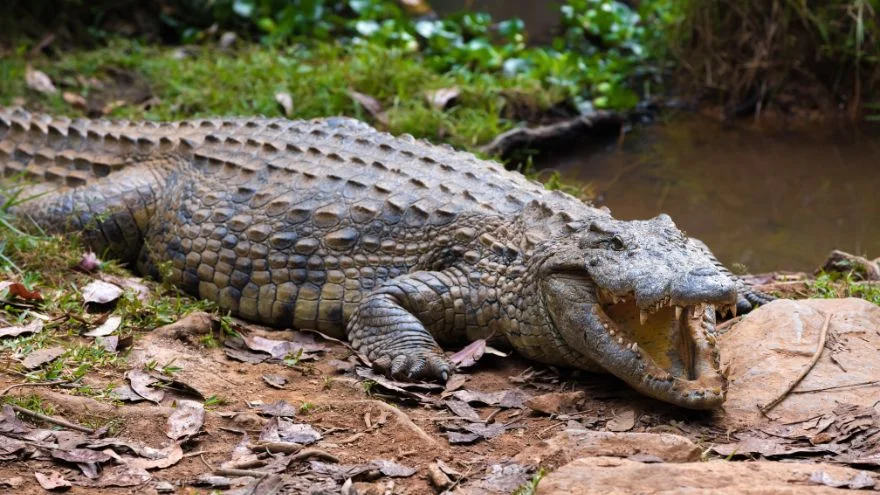
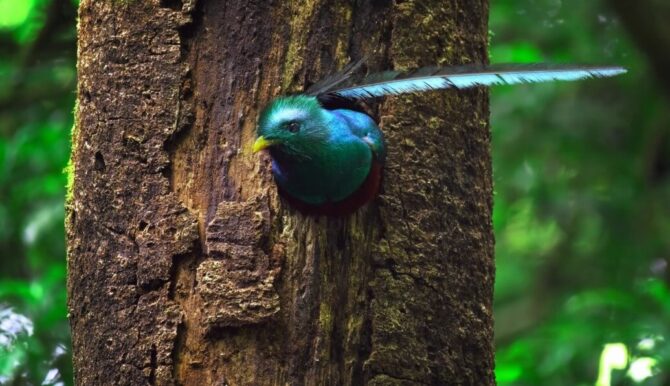



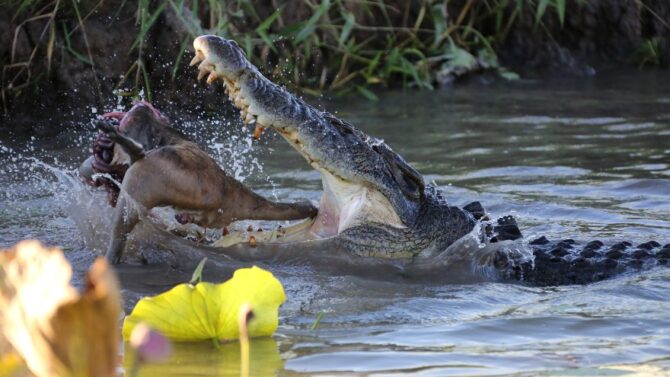
![Do Crocodiles Have Tongues & Taste Buds [Answered]](https://animalvivid.com/wp-content/uploads/2022/10/Do-Crocodiles-Have-Tongues-Taste-Buds-Answered.jpg.webp)